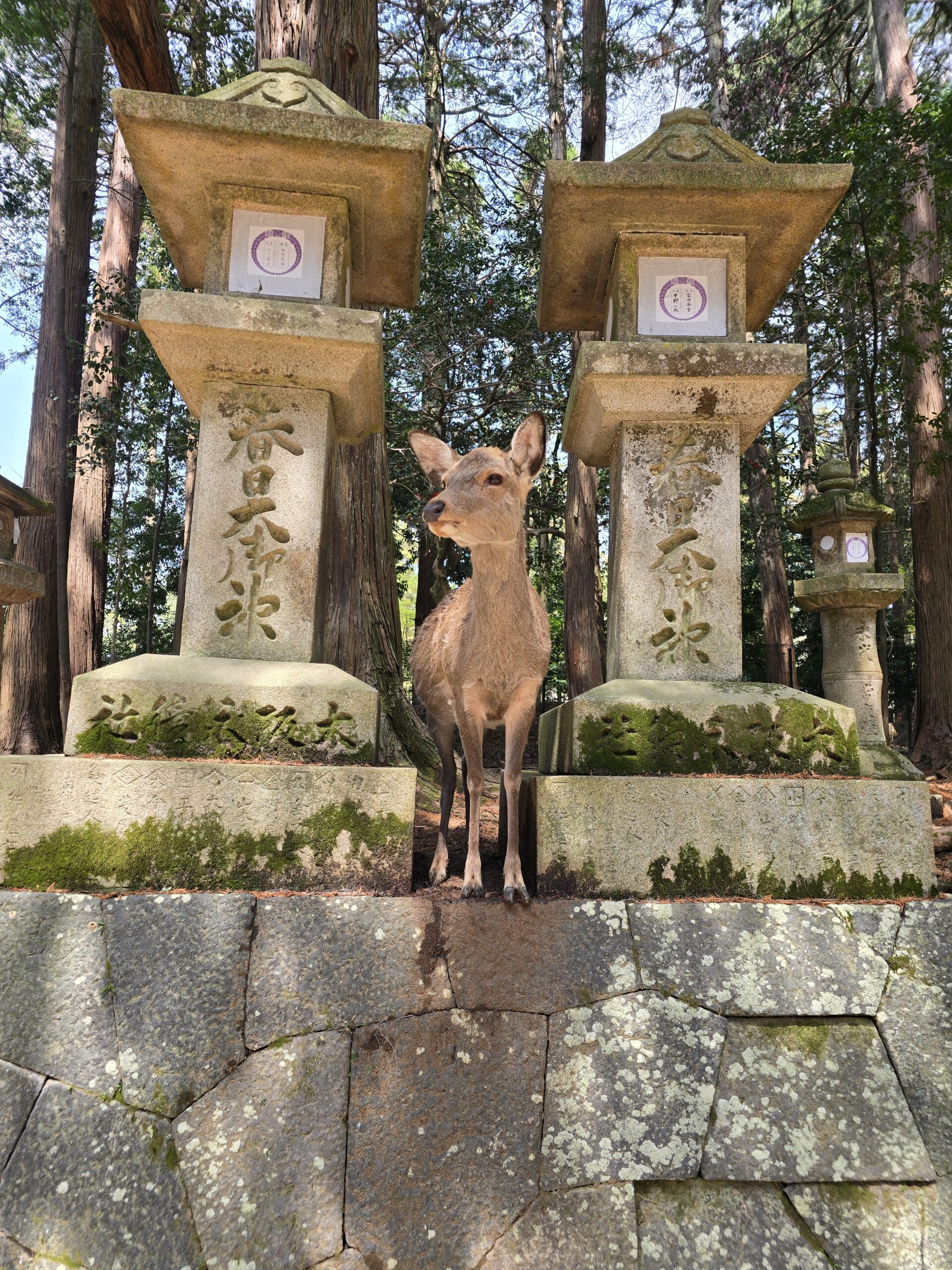Nara was high on my list of places to visit, as the old capital of Japan before Kyoto, and Kyoto before Tokyo. The draw: greenery after the cityscapes, the silka sacred deer in the park, World Heritage Sites and Japan’s biggest Buddha housed in one of the biggest wooden structures in the world..
Not one bit of all this disappointed, but the real stars of the show were the deer.
This could be a case study for my Masters. The tourist literature says that there are 1300 animals across the 1200 acre park and that as wild animals you should not touch them, nor feed them with anything but the deer biscuits ( a wheat flour / rice bran mix) that are sold by park vendors for 200¥ ( 1 gdp). In reading this I expected to see a zoo of overenriched, far from wild, deer.
I then doubled down on some the academic writing on the subject. A recent symposium on the subject of the deer was held after 43 tourists were injuried in 2024 ( should the deer be taken out of the park, risk v loss of tourism?), locals complaining of increasing levels of excrement on the streets ( I witnessed two deer loitering around the train station – presumably waiting for daytrippers from Kyoto – 35 hoof trodden minutes from the park gate). Other concerns were for the increasing numbers of deer and the potential threat to the UNESCO protected primeval (love that word) Mt Kasuga Forest, part of the park. Already many saplings have wire meshing at the base. Lastly, concerns about the loss of the sacred gene as the park deer ‘frolicked’ with similarly increasing numbers of deer outside the park. Not mentioned, although probably an important issue, the potential spill of zoonotics from animal to human, and human to animal. Both come in to very close contact with each other in the park.

I now speak as I saw it. Firstly, the deer were, most likely, here before the humans, so if we were to get rid of a species that errr…should be the human species. Knowing that this will never happen, do they lose the deer? The park has incredible sights and a truly serene beauty, but the deer belong there, they cannot now be removed.
So the deer and humans need to coexist. The deer look in great condition and in a quieter part of the park we saw a vet and three assistants checking on a herd of females – but I do feel that they should not be fed, nor touched. Does feeding them not ultimately bridge the gap between wild and zoo animals? There were deer, naturally, attracted to the areas where tourists congregate and distribute biscuits ( main shot here at a temple entrance) but they lose interest quickly and in areas of the park they freely roam with less human contact. Picture below. A deer eating fallen cherry blossom.

I can hear the counter arguments ; take away the deer biscuits and those dumb humans will feed them from their packed lunches, but then this is Japan where you don’t eat in public and we foreigners are shamed in to following the rulebook. No biscuits and the deer could disappear in to the forest and be rarely seen? One thing we can be sure of is that the Japanese will find a solution to the dilemma.
Putting the deer aside, the park is also blessed by amazing temples the vast Buddha and the 300 year old wooden building it is housed in. This has a Taj Mahal wow factor. Nara is so worth the trip.








Leave a Reply to Michelle Cancel reply